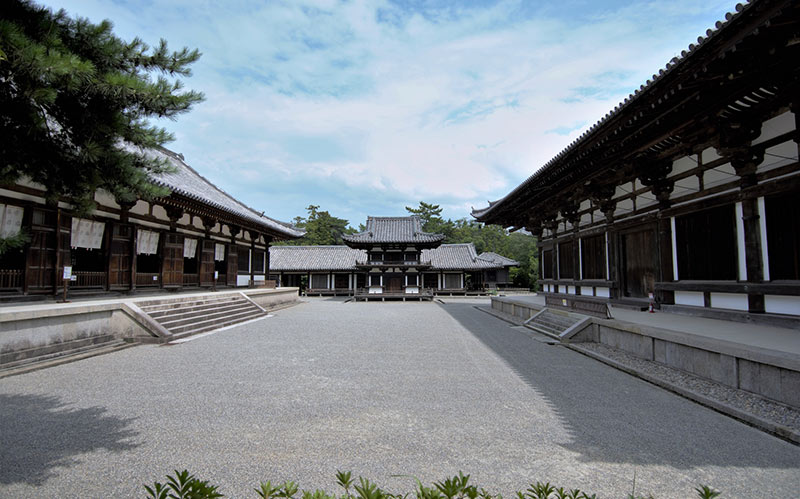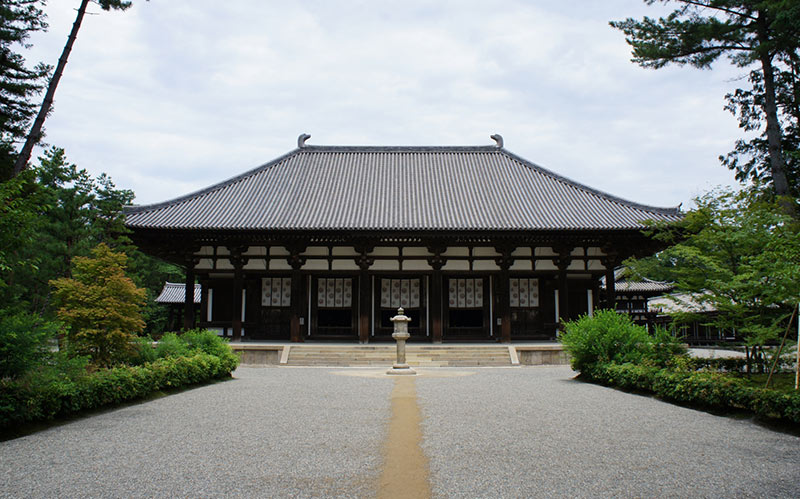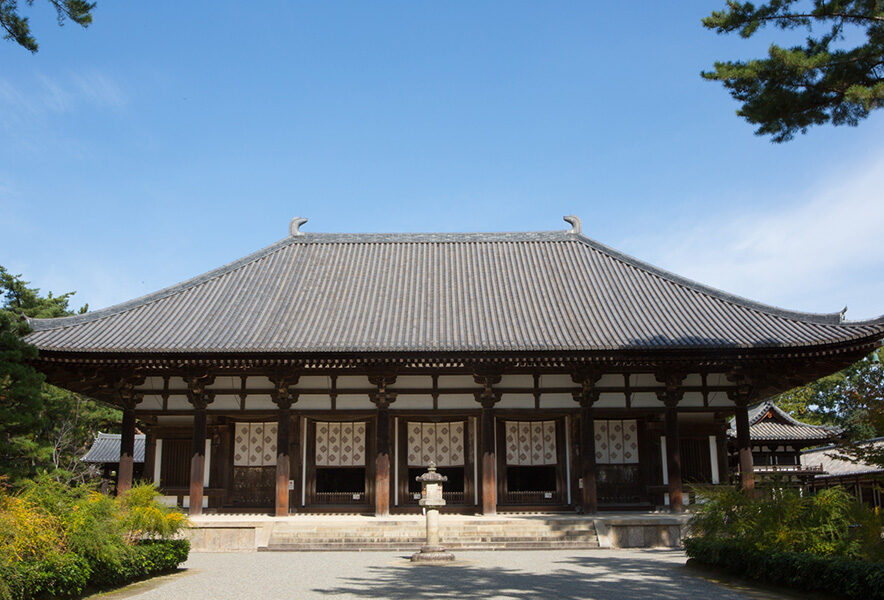- What kind of temple is “Toshodaiji Temple”? A temple built by the Tang Dynasty monk Ganjin
- What kind of architecture does “Toshodaiji Temple” have? A treasury of national treasures and important cultural properties
- Access to Toshodaiji Temple
- Parking around Toshodaiji Temple
- Toshodaiji Temple Official Website
- Recommended around Toshodaiji Temple
What kind of temple is “Toshodaiji Temple”? A temple built by the Tang Dynasty monk Ganjin
Toshodaiji Temple is the head temple of the Ritsu sect of Buddhism, located in Gojo-cho, Nara City, Nara Prefecture.
The Ritsu Sect is a sect of Buddhism established in the Tang Dynasty and introduced to Japan by Ganjin, and was one of the six sects of the Southern Capital that flourished in the Heijo-kyo Capital in the Nara Period.
Toshodaiji Temple was built in 759 by the Chinese Tang Dynasty monk Kanjin.
Buddhism was already flourishing in Japan at that time, and during the reign of Emperor Shomu (reigned 724-749), under the concept of “Shinkokukoku” (Buddhism has the power to protect and stabilize the nation), Kokubunji and Kokubun nunji temples were built throughout the country. As Buddhism developed and flourished, the number of priests who disregarded the Buddhist precepts (rules in Buddhism) increased, so Emperor Shomu invited Ganjin, a renowned “Buddhist preceptor” in Tang China, to Japan.
After overcoming various hardships, including five failed trips and the loss of sight in both eyes, Ganjin came to Japan on his sixth trip in 754, 12 years after his first invitation by Emperor Shomu.
In Japan, at the order of Emperor Kohken, he worked mainly to establish a kyodan (a platform built for giving precepts to those who would become monks and nuns) and to develop a system of Buddhist precepts.
The main kaisandan established by Ganjin were at Todaiji Temple, Shimono-Yakushiji Temple, and Dazaifu.
In 759, when he was given the site of the former residence of Prince Nittabe (the 10th prince of the 40th Emperor Temmu), Ganjin established the Buddhist precepts and built “Toshodai-ji Temple.
Later, Ganjin died in 763 at the age of 76.

What kind of architecture does “Toshodaiji Temple” have? A treasury of national treasures and important cultural properties
Toshodaiji Temple,” built by Ganjin, has many buildings that are national treasures and important cultural properties.
First is Kondo.
Kondo is the main building of the temple and is located in front of the Nandaimon gate. Kondo is the only existing building of the Kondo complex built in the Nara period (710-794), and is designated as a National Treasure. Inside, the main image of Rushanabutsu is enshrined in the center, with a standing image of Yakushi Nyorai on the right and a standing image of Senju Kannon (the thousand-armed Kannon) on the left. Other statues include a standing Brahma, a standing Teishakuten, and a standing Shitenno, all of which are designated as national treasures.
Next is the ” Kodo ” (lecture hall). It stands behind the Kondo Hall and is a National Treasure.
The building was moved from the East Choshuden (Choshuden: a building used as an antechamber for the court’s vassals when they served in the imperial court) during the renovation of Heijo Palace (the inner palace of Heijo-kyo) in around 760.
Although it was reconstructed once during the Kamakura period (1185-1333), it is a very valuable building where visitors can see the architecture of the imperial court in the Nara period (710-794).
Inside are a seated statue of Maitreya Nyorai (the principal image, an Important Cultural Property), a standing statue of Jikkuiten (National Treasure), and a standing statue of Zocho-ten (National Treasure).
Other buildings include the Koro (National Treasure), in which the Buddhist relics brought by Ganjin from Tang China are enshrined, and the Mieido (Important Cultural Property), in which a portrait sculpture of Ganjin (National Treasure) is enshrined. The “Kaidan,” or altar, installed by Ganjin is located on the west side of the temple grounds.

Access to Toshodaiji Temple
13-46 Gojo-cho, Nara-shi, Nara 630-8032
Parking around Toshodaiji Temple
Toshodaiji Temple Official Website
Official site:https://toshodaiji.jp/english/index.html
